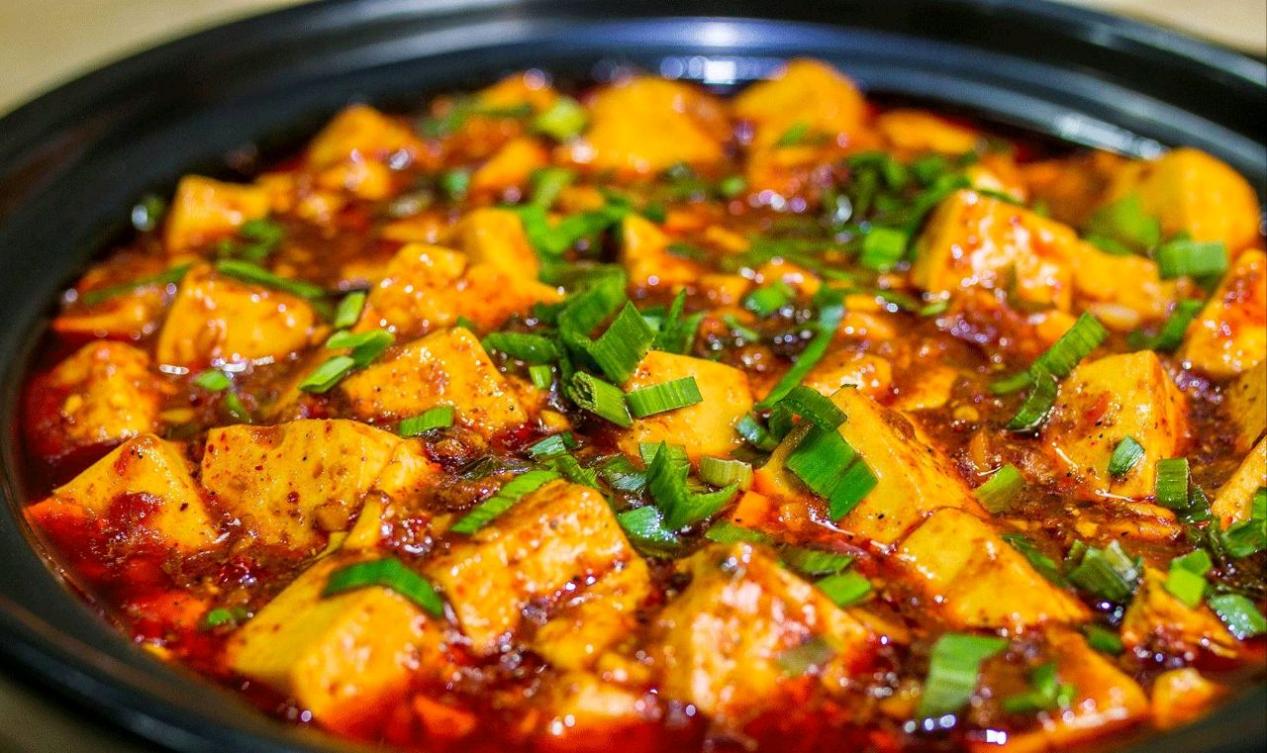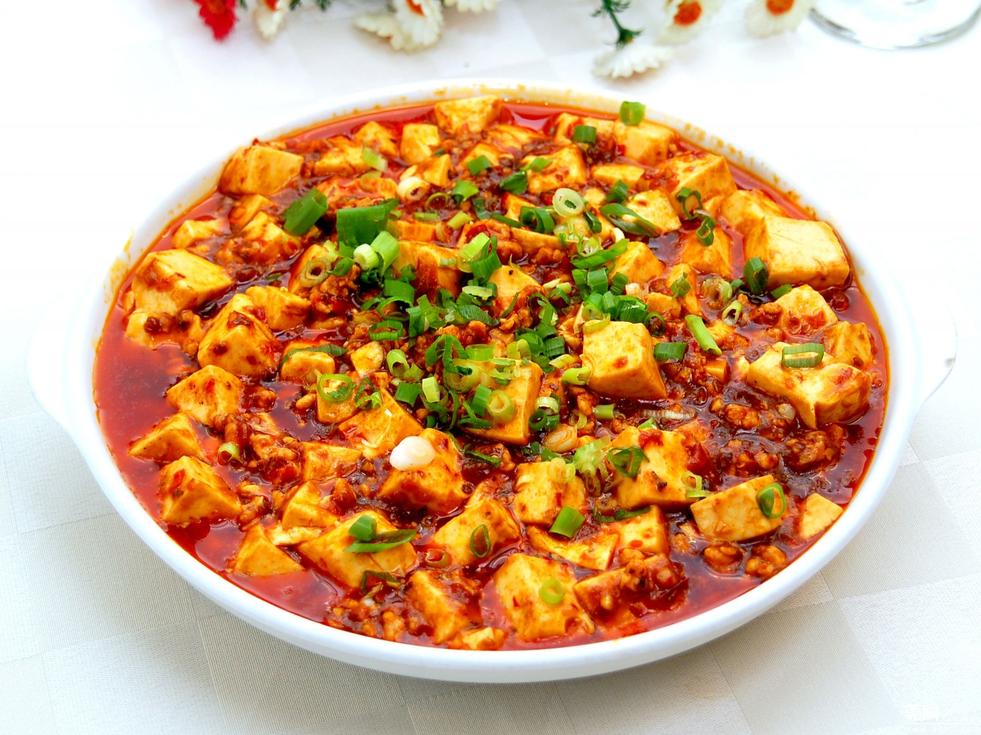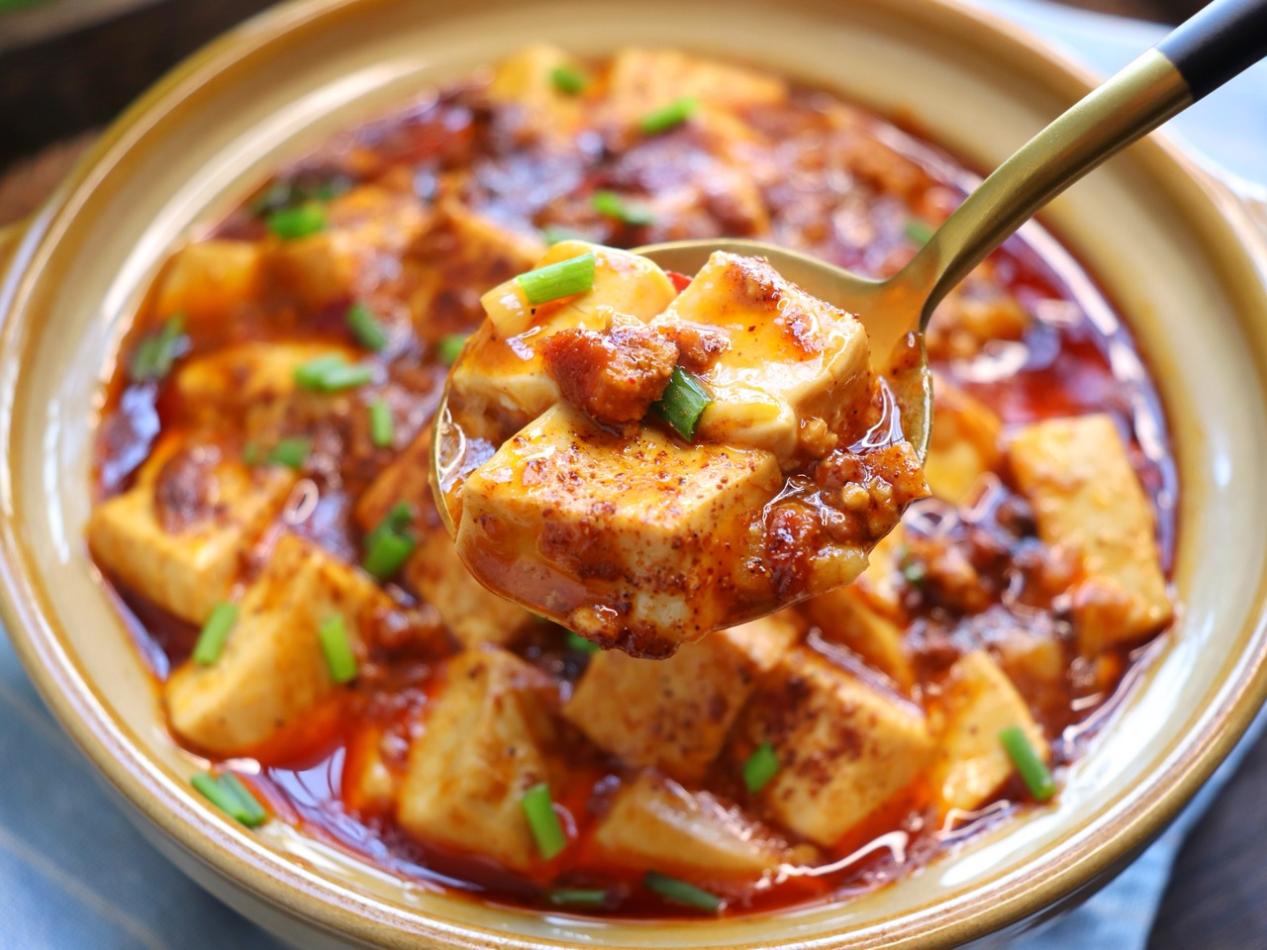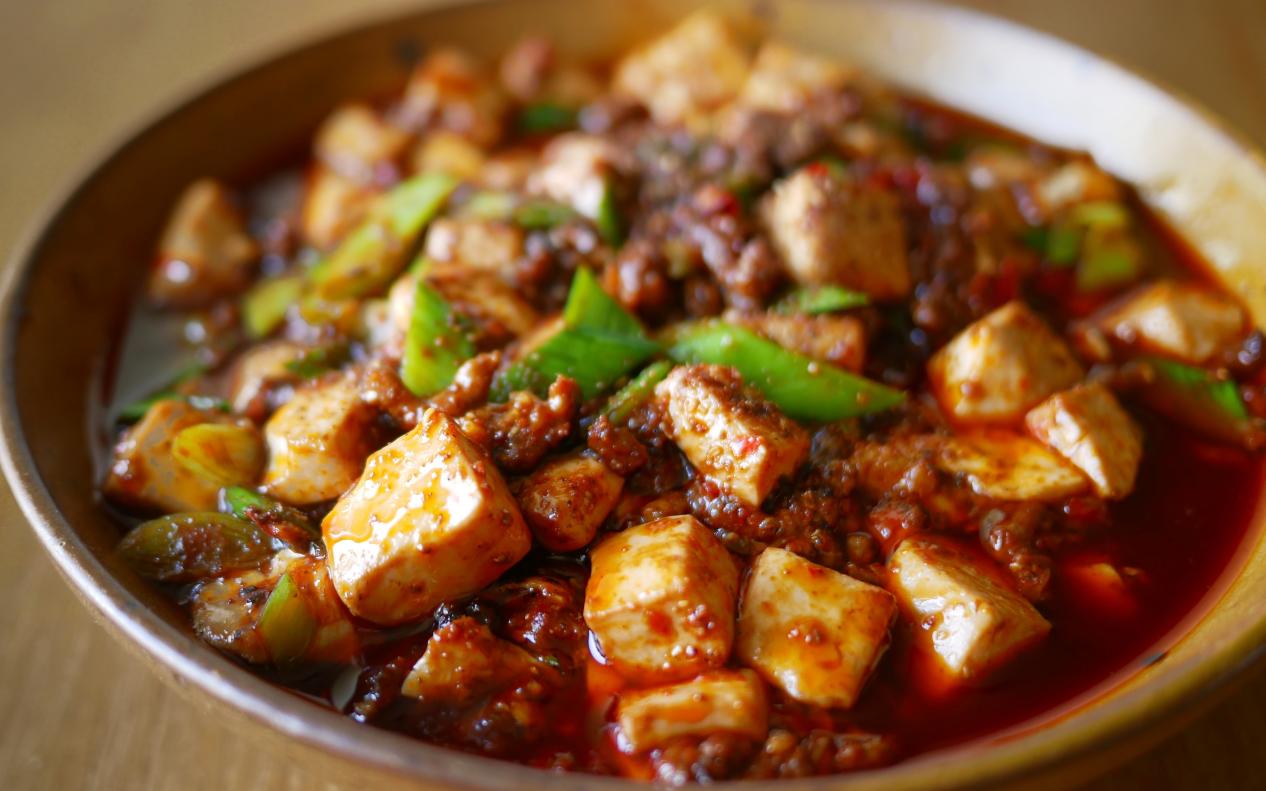
1. Ingredients and Preparation
The primary ingredients of Mapo Tofu include soft tofu, minced beef, doubanjiang (fermented broad bean paste), Sichuan peppercorns, chili powder, and scallions. The traditional preparation involves several key steps:
Preparing the Tofu: First, cut the tofu into cubes and blanch them in boiling water to remove any unpleasant odor. Using soft tofu is crucial, as it absorbs the flavors of the sauce and provides a delicate texture.

Cooking the Minced Meat: Heat oil in a wok, and stir-fry the minced beef until fragrant. Then, add minced ginger, garlic, and chili powder to enhance the aroma.
Seasoning: Incorporate doubanjiang, stirring until well mixed. Add an appropriate amount of water and bring it to a boil before gently adding the tofu, allowing it to soak in the flavors.
Finishing Touches: Finally, sprinkle in Sichuan peppercorns and chopped scallions. Allow the sauce to thicken slightly before serving. Garnish with extra Sichuan pepper and chili for an inviting presentation.
2. Flavor Profile
Mapo Tofu is famous for its five distinct flavors: numbing (from Sichuan peppercorns), spicy (from chili), hot (due to temperature), fresh (from the ingredients), and aromatic (from the spices). The interplay of the numbing sensation from the Sichuan peppercorns and the heat from the chili creates a complex and thrilling taste experience. The silky texture of the tofu complements the savory minced meat, offering a delightful contrast.
3. Cultural Significance
Mapo Tofu is not just a dish; it represents a vital aspect of Sichuan culture. In Chengdu, it often graces family dinners, gatherings with friends, and festive banquets. The dish symbolizes hospitality and a passion for food, reflecting the Sichuan people's love for life and commitment to culinary excellence.

Furthermore, Mapo Tofu's popularity has spread far beyond China, becoming an emblem of Chinese cuisine worldwide. Whether in Chinese restaurants abroad or at food festivals, Mapo Tofu consistently draws attention, making it a go-to choice for those eager to explore the flavors of China.
4. Variations
As time has passed, Mapo Tofu has evolved into various adaptations. In some regions, chefs may use chicken, pork, or vegetarian ingredients instead of beef to cater to diverse dietary preferences. Additionally, innovative versions may incorporate seafood or unique spices, providing new taste experiences for diners.

5. Conclusion
Sichuan Mapo Tofu is a dazzling gem in the realm of Chinese cuisine. It delights the palate and encapsulates the cultural essence of Sichuan’s culinary heritage. Whether you choose to recreate it at home or savor it in a restaurant, Mapo Tofu promises endless joy and satisfaction. Each bite of this spicy delicacy is a profound journey into the heart of Sichuan's food culture.
I hope this introduction helps you appreciate the allure of Sichuan Mapo Tofu! If you have any other topics you’d like to explore, feel free to let me know.



